Eco-Friendly Nanoplatforms for Crop Quality Control, Protection, and Nutrition
- PMID: 33977068
- PMCID: PMC8097385
- DOI: 10.1002/advs.202004525
Eco-Friendly Nanoplatforms for Crop Quality Control, Protection, and Nutrition
Abstract
Agricultural chemicals have been widely utilized to manage pests, weeds, and plant pathogens for maximizing crop yields. However, the excessive use of these organic substances to compensate their instability in the environment has caused severe environmental consequences, threatened human health, and consumed enormous economic costs. In order to improve the utilization efficiency of these agricultural chemicals, one strategy that attracted researchers is to design novel eco-friendly nanoplatforms. To date, numerous advanced nanoplatforms with functional components have been applied in the agricultural field, such as silica-based materials for pesticides delivery, metal/metal oxide nanoparticles for pesticides/mycotoxins detection, and carbon nanoparticles for fertilizers delivery. In this review, the synthesis, applications, and mechanisms of recent eco-friendly nanoplatforms in the agricultural field, including pesticides and mycotoxins on-site detection, phytopathogen inactivation, pest control, and crops growth regulation for guaranteeing food security, enhancing the utilization efficiency of agricultural chemicals and increasing crop yields are highlighted. The review also stimulates new thinking for improving the existing agricultural technologies, protecting crops from biotic and abiotic stress, alleviating the global food crisis, and ensuring food security. In addition, the challenges to overcome the constrained applications of functional nanoplatforms in the agricultural field are also discussed.
Keywords: crop growth regulation; nanomaterials; pest control; pesticides detection; phytopathogen inactivation.
© 2021 The Authors. Advanced Science published by Wiley‐VCH GmbH.
Conflict of interest statement
The authors declare no conflict of interest.
Figures


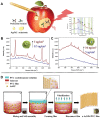
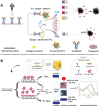
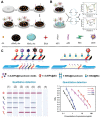




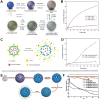
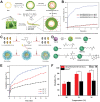

References
-
- Enserink M., Hines P. J., Vignieri S. N., Wigginton N. S., Yeston J. S., Science 2013, 341, 728. - PubMed
-
- a) Liang Y., Guo M., Fan C., Dong H., Ding G., Zhang W., Tang G., Yang J., Kong D., Cao Y., ACS Sustainable Chem. Eng. 2017, 5, 4802;
- b) Mogul M. G., Akin H., Hasirci N., Trantolo D. J., Gresser J. D., Wise D. L., Resour., Conserv. Recycl. 1996, 16, 289.
-
- Al‐Taher F., Banaszewski K., Jackson L., Zweigenbaum J., Ryu D., Cappozzo J., J. Agric. Food Chem. 2013, 61, 2378. - PubMed
-
- Hu Z., Lustig W. P., Zhang J., Zheng C., Wang H., Teat S. J., Gong Q., Rudd N. D., Li J., J. Am. Chem. Soc. 2015, 137, 16209. - PubMed
-
- Flood J., Food Sec. 2010, 2, 215.
Publication types
MeSH terms
Substances
LinkOut - more resources
Full Text Sources
Other Literature Sources
